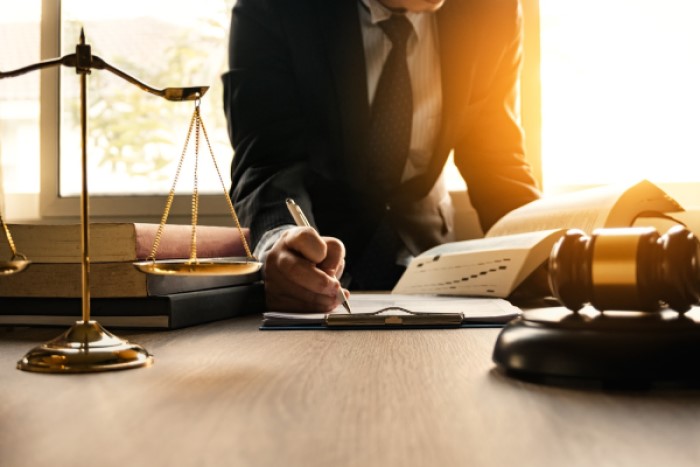Discover the intricacies of left-turn motorcycle accidents with cars in this detailed guide. Learn how these accidents happen, their common causes, and essential safety tips to prevent them.
Introduction
Left-turn motorcycle accidents with cars are among the most common types of collisions on roads worldwide. These accidents often result in severe injuries or fatalities for motorcyclists due to the vulnerability of their vehicles. Understanding how these accidents occur and the factors contributing to them is crucial for both motorcyclists and car drivers. In this article, we delve into the dynamics of left-turn motorcycle accidents with cars, exploring their causes, consequences, and preventive measures.
Left-Turn Motorcycle Accident with a Car: An Overview
Left-turn motorcycle accidents with cars involve a car making a left turn at an intersection, crossing the path of an oncoming motorcycle. These accidents typically occur when the motorcyclist has the right of way and the car driver fails to yield or misjudges the motorcycle’s speed and distance. The impact of such collisions can be catastrophic, leading to serious injuries or fatalities for the motorcyclist.
Understanding the Dynamics
In left-turn motorcycle accidents with cars, the motorcyclist is often in the most vulnerable position due to the smaller size and lesser visibility of their vehicle. The car driver, while making a left turn, may fail to notice the approaching motorcycle or misjudge its speed, leading to a collision.
Common Causes
Several factors contribute to left-turn motorcycle accidents with cars, including:
- Driver Negligence: Inattentive or distracted driving is a leading cause of these accidents. A driver may fail to see the motorcycle or misjudge its speed due to distractions such as texting, adjusting the radio, or talking to passengers.
- Failure to Yield: Car drivers may fail to yield the right of way to oncoming motorcycles, especially at intersections with poor visibility or confusing traffic signals.
- Speeding: Excessive speed can reduce a driver’s reaction time, making it more likely for them to misjudge the distance and speed of an approaching motorcycle.
Factors Contributing to Left-Turn Motorcycle Accidents with Cars
Understanding the various factors contributing to these accidents is essential for implementing preventive measures and improving road safety for motorcyclists and drivers alike.
Visibility Challenges
One of the primary challenges in preventing left-turn motorcycle accidents with cars is the issue of visibility. Motorcycles are smaller and less visible than cars, especially in heavy traffic or adverse weather conditions.
Driver Awareness and Education
Educating both motorcyclists and car drivers about the risks associated with left-turn accidents and the importance of defensive driving can significantly reduce the incidence of such collisions.
Preventive Measures
Preventing left-turn motorcycle accidents with cars requires a multi-faceted approach involving infrastructure improvements, driver education, and technological advancements.
Infrastructure Improvements
Enhancing road design at intersections by implementing clearer signage, improved visibility, and designated lanes for motorcycles can help reduce the risk of left-turn accidents.
Driver Education and Awareness Campaigns
Educating drivers about the specific challenges faced by motorcyclists, such as their smaller size and greater vulnerability, can promote safer driving practices and increase awareness on the road.
Technological Solutions
Advancements in vehicle technology, such as collision avoidance systems and blind-spot detection, can provide additional safety measures to prevent left-turn accidents.
Safety Tips for Motorcyclists
While motorcyclists cannot control the actions of other drivers, they can take proactive steps to reduce their risk of being involved in left-turn accidents.
Stay Visible
Wearing bright and reflective gear, especially during low-light conditions, can help increase a motorcyclist’s visibility to other road users.
Anticipate Left-Turn Scenarios
Being aware of potential left-turn situations and maintaining a safe distance from vehicles making left turns can give motorcyclists more time to react and maneuver if necessary.
FAQs (Frequently Asked Questions)
- What should I do if I’m involved in a left-turn motorcycle accident with a car? If you’re involved in such an accident, prioritize your safety and seek medical attention if needed. Report the accident to the authorities and gather evidence, including witness statements and photographs of the scene.
- How can car drivers avoid causing left-turn accidents with motorcycles? Car drivers should always check their blind spots and mirrors before making a left turn, yield to oncoming traffic, and avoid distractions while driving.
- Are left-turn motorcycle accidents more common at certain times of the day? These accidents can occur at any time, but they may be more prevalent during peak traffic hours or in areas with heavy congestion.
- Can weather conditions affect the likelihood of left-turn motorcycle accidents with cars? Yes, adverse weather conditions such as rain or fog can reduce visibility and increase the risk of accidents, including left-turn collisions.
- Is lane positioning important for motorcyclists to avoid left-turn accidents? Yes, motorcyclists should position themselves in a way that maximizes their visibility to other road users and allows them to react quickly to potential hazards.
- Are there legal implications for car drivers involved in left-turn motorcycle accidents? Depending on the circumstances of the accident and local traffic laws, car drivers may face legal consequences such as citations or lawsuits for negligence.
Conclusion
Left-turn motorcycle accidents with cars pose significant risks to motorcyclists and car drivers alike. By understanding the causes of these accidents and implementing preventive measures, we can work towards reducing their occurrence and ensuring safer roads for everyone.





More Stories
Learn about Traumatic Brain Injuries (TBIs) caused by slip and fall accidents. Discover the symptoms, treatment options, and preventive measures for seeking compensation and support.
Work-Related Back Injuries: Causes, Treatments, and Compensation
Evidence Collection in Pedestrian Accident Cases: Building a Strong Case